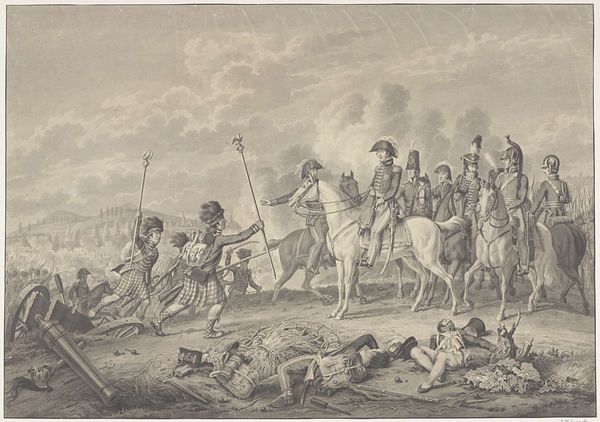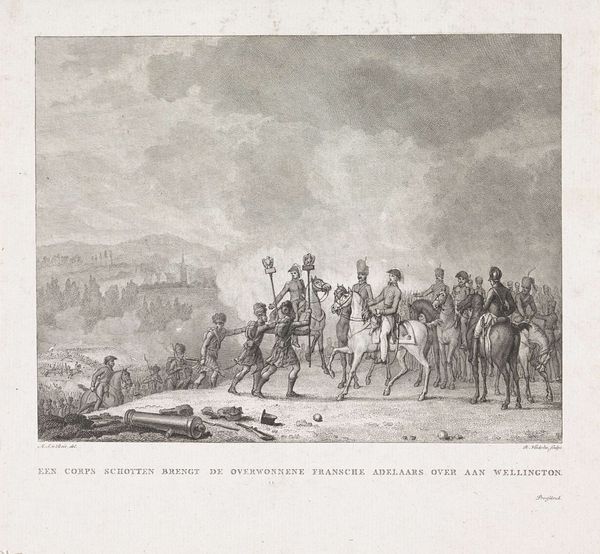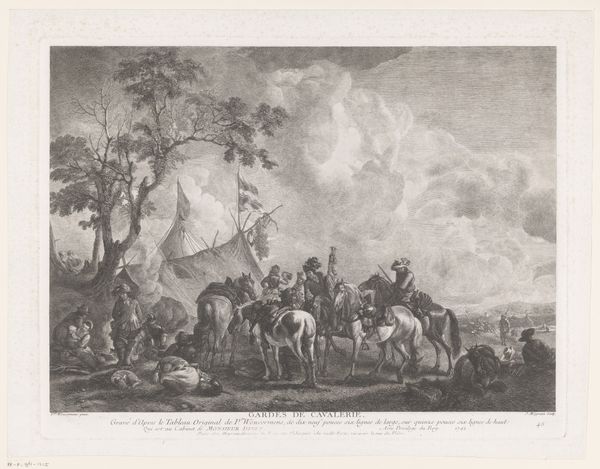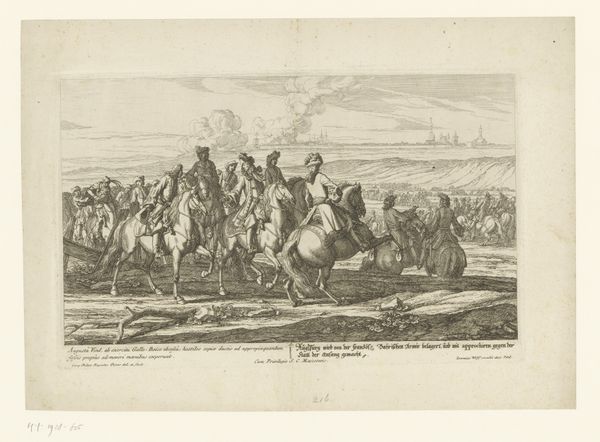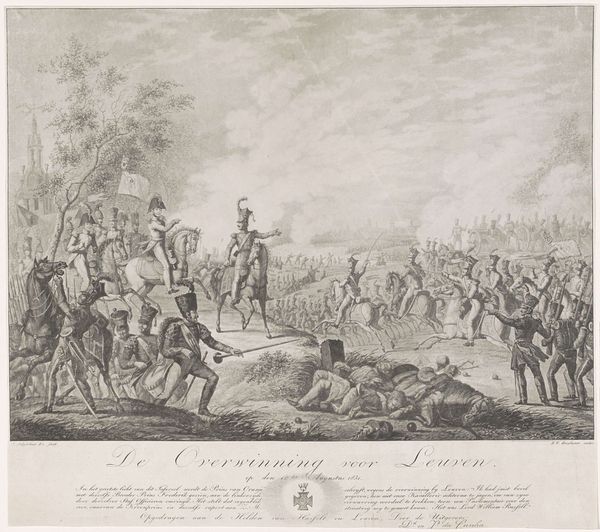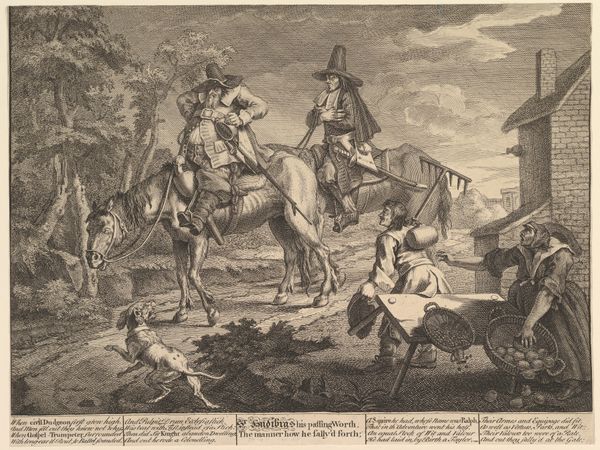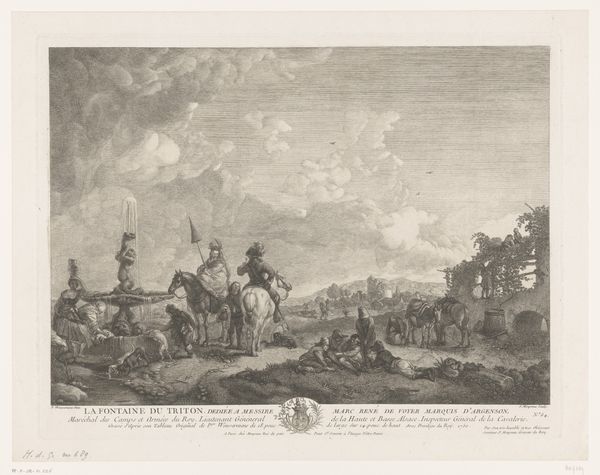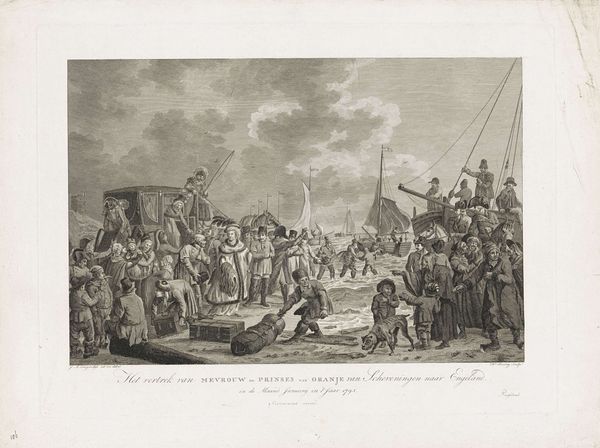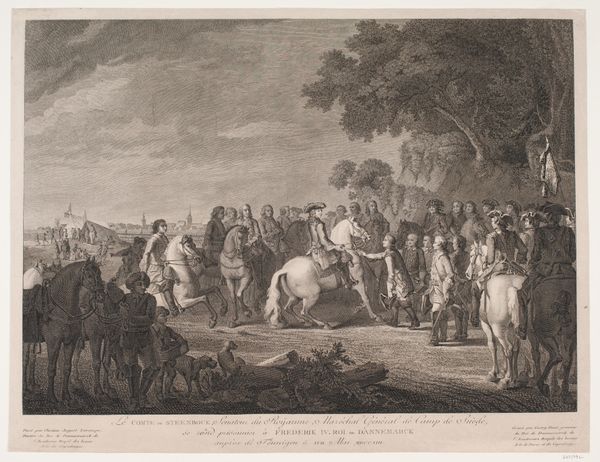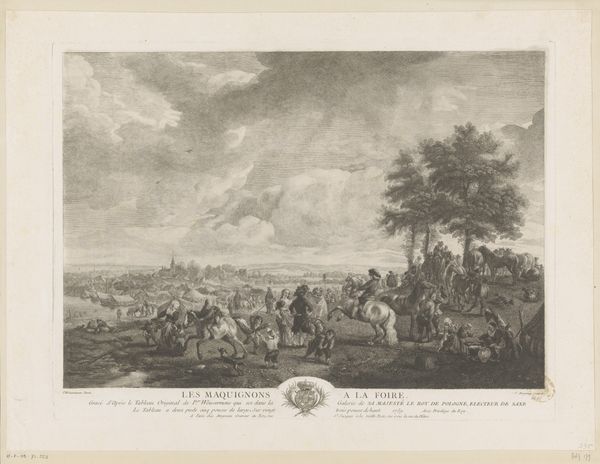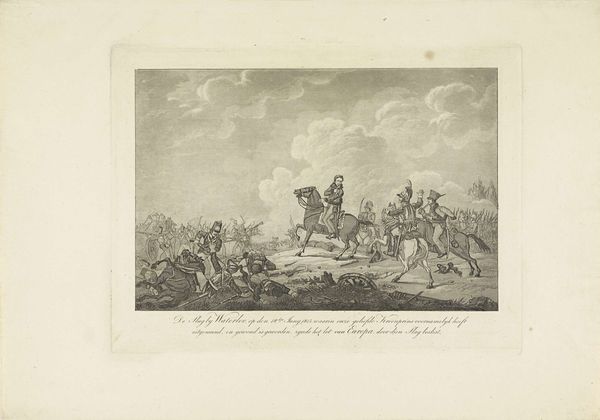
De Slag bij Waterloo. op het tijdstip dat aan Zijne Excellentie den Generaal Veldmaarschalk Lord Wellington twee Adelaars worden aangeboden, door de dappere Bergschotten op de Fransche veroverd. den 18de Junij 1815 1816
0:00
0:00
dirkjurriaansluyter
Rijksmuseum
print, engraving
#
narrative-art
# print
#
old engraving style
#
landscape
#
figuration
#
form
#
romanticism
#
line
#
history-painting
#
engraving
#
realism
Dimensions: height 615 mm, width 778 mm
Copyright: Rijks Museum: Open Domain
Curator: What strikes me first about this 1816 engraving by Dirk Jurriaan Sluyter is its chaos—a beautiful chaos, of course. So much is happening on this battlefield. Editor: Indeed. Sluyter's “The Battle of Waterloo” captures a pivotal moment, less about individual glory and more about power structures and imperial narratives being reinforced. The injured and deceased soldiers lie discarded on the lower side of the composition in sharp contrast to Wellington, still on horseback, ready to accept trophies from soldiers. Curator: You're right, it is interesting how Sluyter captures that duality. The lower foreground is quite literally littered with the detritus of battle and death, while Wellington and his officers seem completely removed. The overall style also points to the romanticizing of battle through carefully rendered line-work and composition choices. Editor: The composition also underscores the class divisions inherent in warfare. Look at those Scottish soldiers, likely conscripted, practically crawling to offer symbols of victory—those eagles—to the aloof and seemingly untouched Wellington. What does the romanticizing of war truly mean? For whom? Curator: Hmm, you're taking me to some interesting places with this, editor. This rendering is definitely rooted in a romantic interpretation of events. However, I’m compelled by its ability to transform such an infamous moment into a ballet of form. The meticulous lines create a sense of dramatic intensity, don't you think? The stark contrast, amplified by the monochromatic palette, gives it a haunting beauty that’s hard to deny. Editor: I do see the draw in that way it captures a moment in time. At the same time, such depictions risk glorifying a devastating battle—normalizing the machinery of war by emphasizing the supposed honor and valor over the actual carnage and suffering endured primarily by the lower ranks, who in those times would rarely be formally educated soldiers. Curator: I suppose we each view it through our unique lenses. Perhaps Sluyter unwittingly created a powerful juxtaposition—the pomp and circumstance versus the brutal realities. Editor: Perhaps the strength of art lies in sparking these vital conversations, and hopefully in inspiring action that upends historical oppressions.
Comments
No comments
Be the first to comment and join the conversation on the ultimate creative platform.
